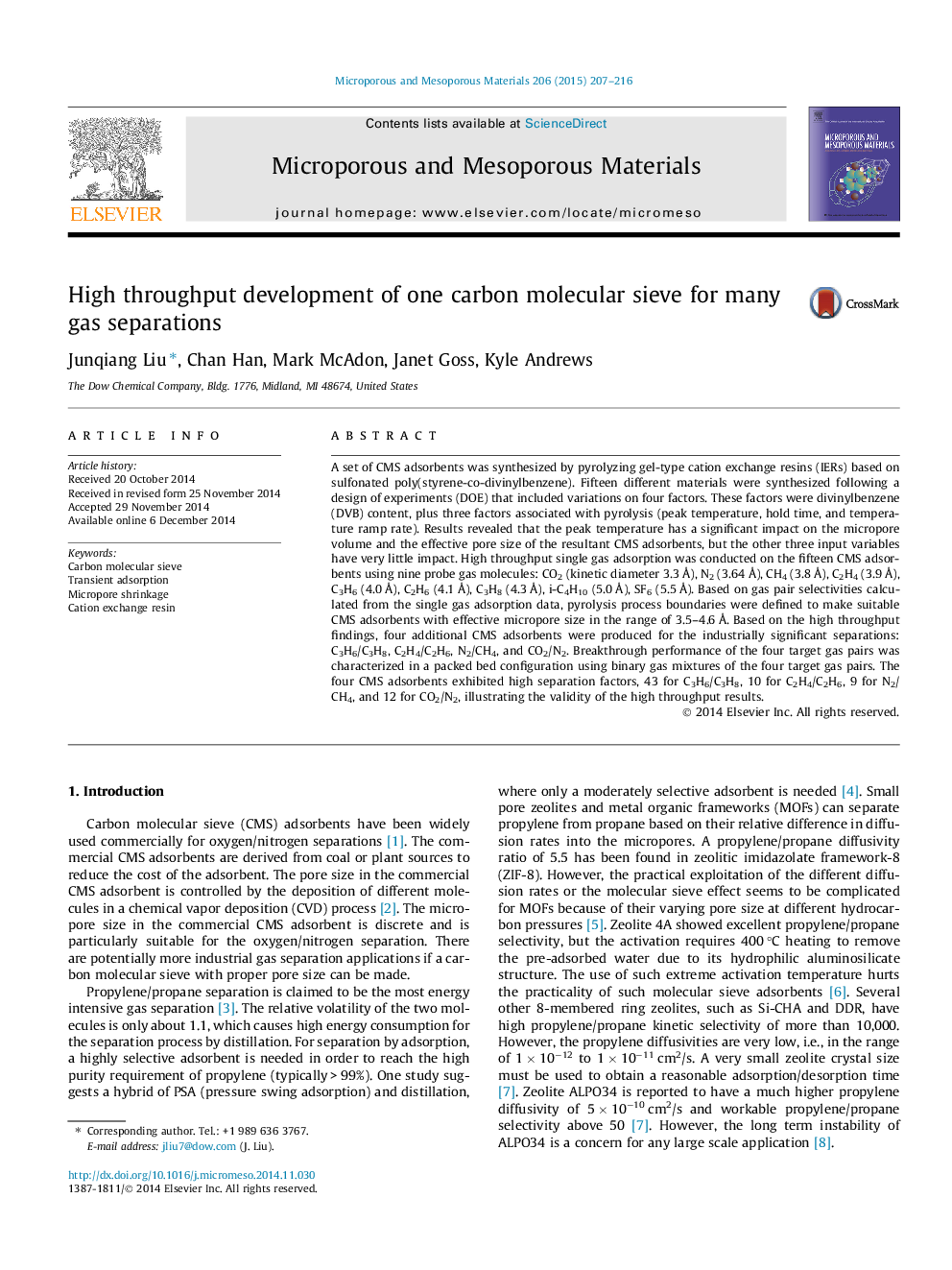| کد مقاله | کد نشریه | سال انتشار | مقاله انگلیسی | نسخه تمام متن |
|---|---|---|---|---|
| 72846 | 49035 | 2015 | 10 صفحه PDF | دانلود رایگان |
• We designed a high throughput transient adsorption technique using nine adsorbates.
• We applied DOE methodology to investigate the carbonization factors systematically.
• We studied the micropore evolution in ion exchange resin based microporous carbon.
• We developed a series of carbon molecular sieves with 3.5–4.6 Å pores.
• The carbon molecular sieve can be used for many industrial gas separations.
A set of CMS adsorbents was synthesized by pyrolyzing gel-type cation exchange resins (IERs) based on sulfonated poly(styrene-co-divinylbenzene). Fifteen different materials were synthesized following a design of experiments (DOE) that included variations on four factors. These factors were divinylbenzene (DVB) content, plus three factors associated with pyrolysis (peak temperature, hold time, and temperature ramp rate). Results revealed that the peak temperature has a significant impact on the micropore volume and the effective pore size of the resultant CMS adsorbents, but the other three input variables have very little impact. High throughput single gas adsorption was conducted on the fifteen CMS adsorbents using nine probe gas molecules: CO2 (kinetic diameter 3.3 Å), N2 (3.64 Å), CH4 (3.8 Å), C2H4 (3.9 Å), C3H6 (4.0 Å), C2H6 (4.1 Å), C3H8 (4.3 Å), i-C4H10 (5.0 Å), SF6 (5.5 Å). Based on gas pair selectivities calculated from the single gas adsorption data, pyrolysis process boundaries were defined to make suitable CMS adsorbents with effective micropore size in the range of 3.5–4.6 Å. Based on the high throughput findings, four additional CMS adsorbents were produced for the industrially significant separations: C3H6/C3H8, C2H4/C2H6, N2/CH4, and CO2/N2. Breakthrough performance of the four target gas pairs was characterized in a packed bed configuration using binary gas mixtures of the four target gas pairs. The four CMS adsorbents exhibited high separation factors, 43 for C3H6/C3H8, 10 for C2H4/C2H6, 9 for N2/CH4, and 12 for CO2/N2, illustrating the validity of the high throughput results.
Figure optionsDownload as PowerPoint slide
Journal: Microporous and Mesoporous Materials - Volume 206, April 2015, Pages 207–216
